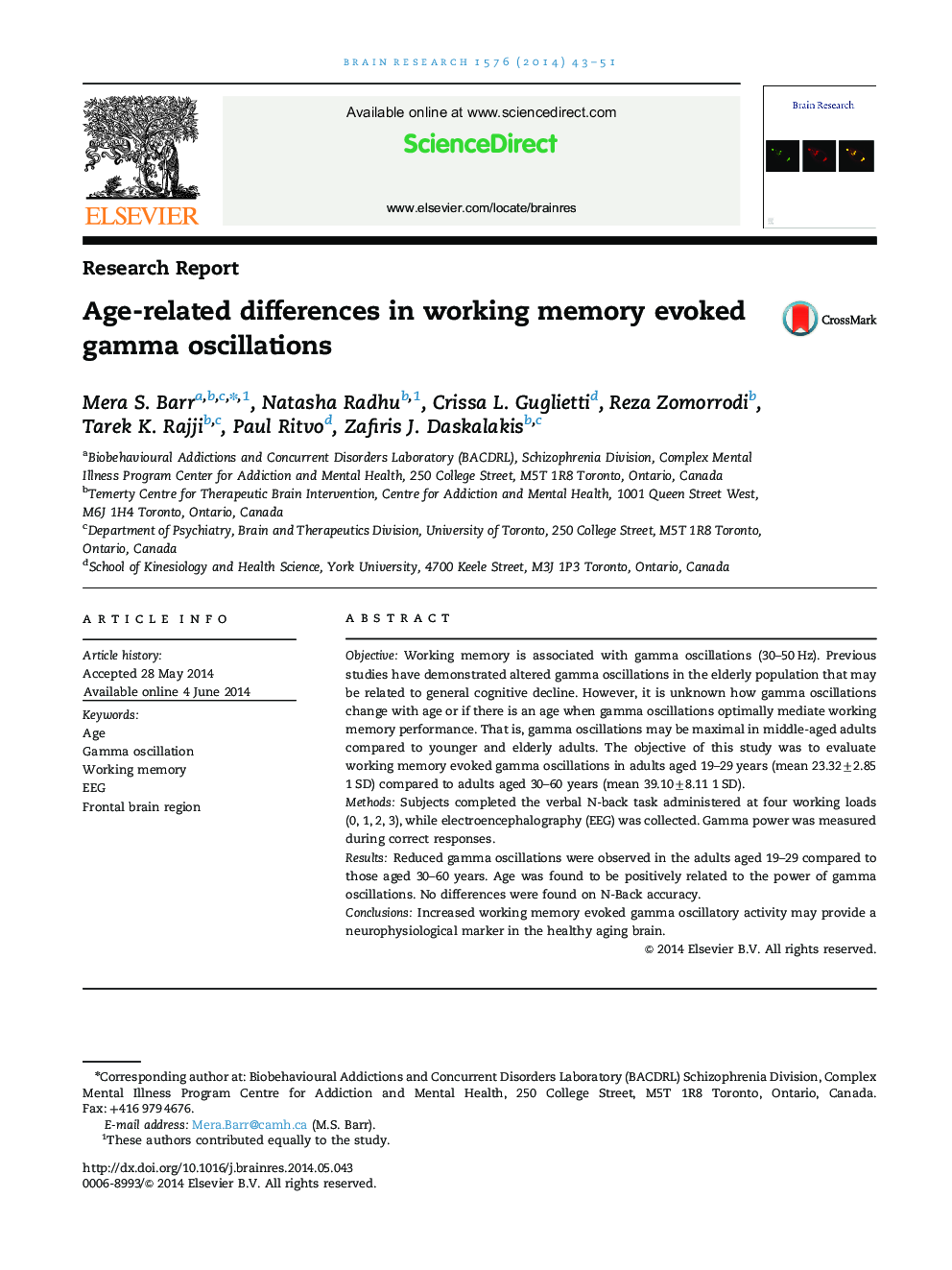| Article ID | Journal | Published Year | Pages | File Type |
|---|---|---|---|---|
| 4324232 | Brain Research | 2014 | 9 Pages |
•Working memory evoked gamma oscillations were evaluated in adults aged 19–60 years.•Reduced gamma oscillations were found in adults aged 19–29 compared to 30–60 years.•Gamma oscillations may provide a neurophysiological marker in healthy aging.
ObjectiveWorking memory is associated with gamma oscillations (30–50 Hz). Previous studies have demonstrated altered gamma oscillations in the elderly population that may be related to general cognitive decline. However, it is unknown how gamma oscillations change with age or if there is an age when gamma oscillations optimally mediate working memory performance. That is, gamma oscillations may be maximal in middle-aged adults compared to younger and elderly adults. The objective of this study was to evaluate working memory evoked gamma oscillations in adults aged 19–29 years (mean 23.32±2.85 1 SD) compared to adults aged 30–60 years (mean 39.10±8.11 1 SD).MethodsSubjects completed the verbal N-back task administered at four working loads (0, 1, 2, 3), while electroencephalography (EEG) was collected. Gamma power was measured during correct responses.ResultsReduced gamma oscillations were observed in the adults aged 19–29 compared to those aged 30–60 years. Age was found to be positively related to the power of gamma oscillations. No differences were found on N-Back accuracy.ConclusionsIncreased working memory evoked gamma oscillatory activity may provide a neurophysiological marker in the healthy aging brain.
